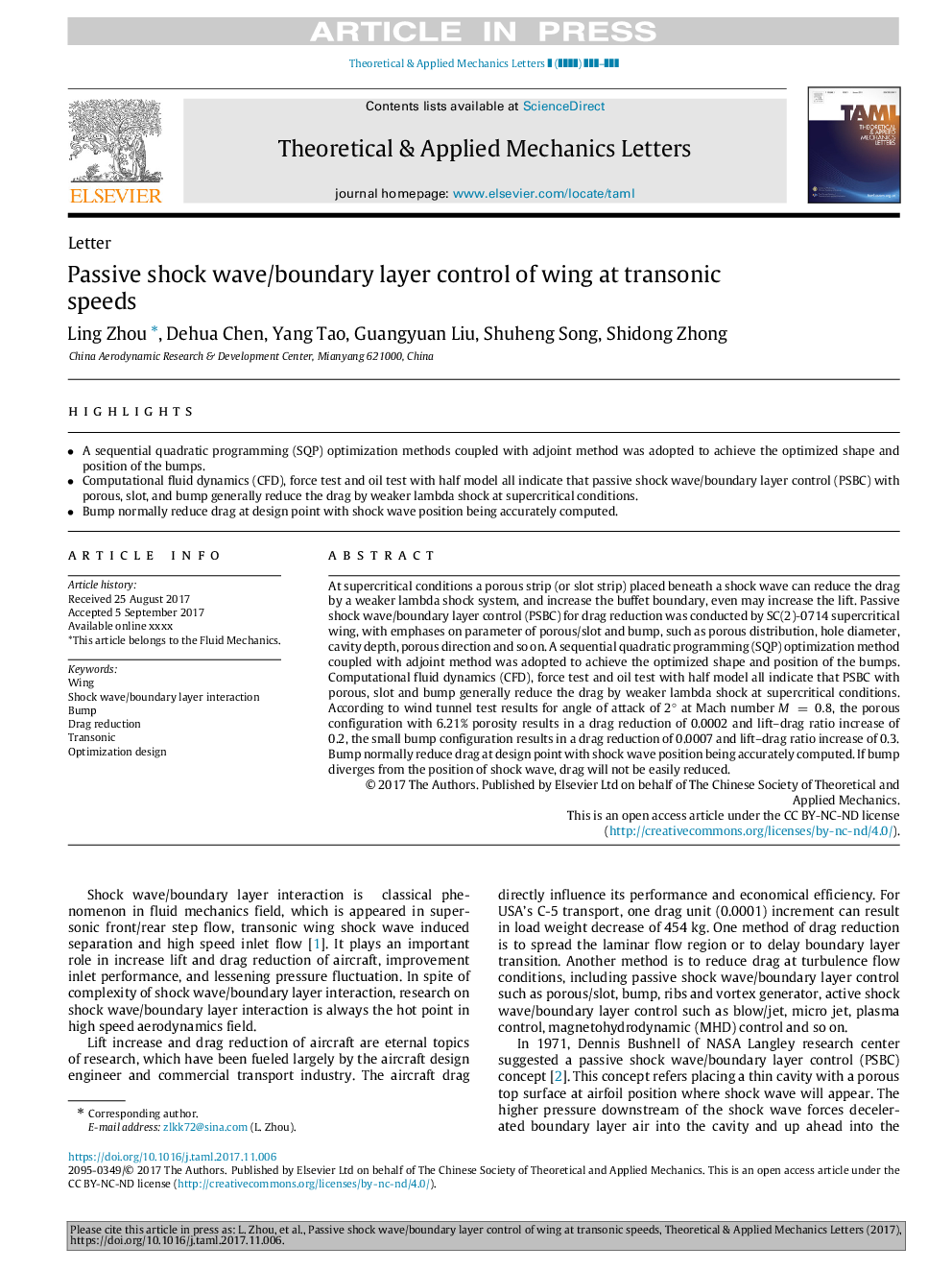| کد مقاله | کد نشریه | سال انتشار | مقاله انگلیسی | نسخه تمام متن |
|---|---|---|---|---|
| 7196482 | 1468345 | 2017 | 6 صفحه PDF | دانلود رایگان |
عنوان انگلیسی مقاله ISI
Passive shock wave/boundary layer control of wing at transonic speeds
ترجمه فارسی عنوان
کنترل ضربه لرزه ای منحنی / مرز بال بر روی سرعت ترانزیت
دانلود مقاله + سفارش ترجمه
دانلود مقاله ISI انگلیسی
رایگان برای ایرانیان
کلمات کلیدی
موضوعات مرتبط
مهندسی و علوم پایه
سایر رشته های مهندسی
مهندسی مکانیک
چکیده انگلیسی
At supercritical conditions a porous strip (or slot strip) placed beneath a shock wave can reduce the drag by a weaker lambda shock system, and increase the buffet boundary, even may increase the lift. Passive shock wave/boundary layer control (PSBC) for drag reduction was conducted by SC(2)-0714 supercritical wing, with emphases on parameter of porous/slot and bump, such as porous distribution, hole diameter, cavity depth, porous direction and so on. A sequential quadratic programming (SQP) optimization method coupled with adjoint method was adopted to achieve the optimized shape and position of the bumps. Computational fluid dynamics (CFD), force test and oil test with half model all indicate that PSBC with porous, slot and bump generally reduce the drag by weaker lambda shock at supercritical conditions. According to wind tunnel test results for angle of attack of 2° at Mach number M=0.8, the porous configuration with 6.21% porosity results in a drag reduction of 0.0002 and lift-drag ratio increase of 0.2, the small bump configuration results in a drag reduction of 0.0007 and lift-drag ratio increase of 0.3. Bump normally reduce drag at design point with shock wave position being accurately computed. If bump diverges from the position of shock wave, drag will not be easily reduced.
ناشر
Database: Elsevier - ScienceDirect (ساینس دایرکت)
Journal: Theoretical and Applied Mechanics Letters - Volume 7, Issue 6, November 2017, Pages 325-330
Journal: Theoretical and Applied Mechanics Letters - Volume 7, Issue 6, November 2017, Pages 325-330
نویسندگان
Ling Zhou, Dehua Chen, Yang Tao, Guangyuan Liu, Shuheng Song, Shidong Zhong,
